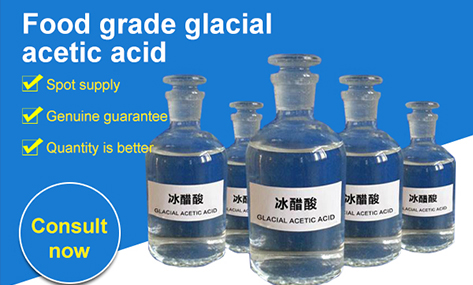
Dec . 07, 2024 05:58 Back to list
Safety Data Sheet for Glacial Acetic Acid and Its Handling Procedures
Understanding SDS for Glacial Acetic Acid
Introduction
Glacial acetic acid is a colorless, volatile liquid that is a fundamental organic chemical with the formula CH₃COOH. It is widely used in various industries, including food production, pharmaceuticals, and chemical manufacturing. To ensure safe handling and usage of glacial acetic acid, understanding its Safety Data Sheet (SDS) is crucial. This document provides critical information about the chemical properties, hazards, handling precautions, and emergency measures related to the substance.
Chemical Properties of Glacial Acetic Acid
Glacial acetic acid, also known as ethanoic acid, is characterized by its pungent odor and sour taste. As a polar protic solvent, it has a high dielectric constant and is able to dissolve a wide range of substances, making it particularly valuable in chemical reactions. It has a boiling point of approximately 118 °C and a melting point of 16.6 °C, which is why it is termed glacial as it can solidify into a crystalline form at low temperatures.
Hazards Associated with Glacial Acetic Acid
The SDS for glacial acetic acid outlines various hazards associated with its handling. Glacial acetic acid is classified as a corrosive substance, capable of causing severe burns to skin, eyes, and respiratory tract upon contact or inhalation. Inhalation of vapors can lead to respiratory irritation and, in extreme cases, chemical pneumonitis. The SDS highlights that prolonged exposure to glacial acetic acid may result in skin dermatitis or chemical burns, emphasizing the importance of suitable personal protective equipment (PPE) during handling.
Safety Precautions
To manage risks associated with glacial acetic acid, the SDS recommends several safety measures. When working with this chemical, it is essential to wear appropriate PPE, which includes gloves, goggles, and protective clothing. Additionally, operations should be conducted in a well-ventilated area or a fume hood to minimize inhalation of vapors.
sds acetic acid glacial

Moreover, ensuring that safety showers and eyewash stations are accessible in the working environment can significantly enhance safety measures. It's essential to develop a thorough understanding of the SDS content to establish proper handling protocols and emergency procedures.
Storage and Disposal
The SDS provides detailed guidance on the correct storage of glacial acetic acid. It should be stored in a cool, dry place away from incompatible materials such as strong bases, oxidizing agents, and reducing agents. Containers should be tightly sealed and labeled appropriately. Furthermore, it’s crucial to keep it away from direct sunlight and sources of ignition to prevent any risk of combustion.
Disposal of glacial acetic acid must be conducted in accordance with local environmental regulations. Typically, it can be neutralized before disposal to ensure that it does not pose a risk to the environment or human health. It is crucial to consult the SDS and local regulations to ensure compliance and safety during disposal.
Emergency Measures
The SDS also outlines emergency measures if an accident occurs. In case of skin contact, the effected area should be flushed with copious amounts of water for at least 15 minutes, and medical attention should be sought immediately. If inhaled, the individual should be moved to an area with fresh air and monitored until professional help arrives. For eye contact, it is imperative to rinse the eyes with water for at least 15 minutes and seek immediate medical assistance.
Conclusion
Understanding the SDS for glacial acetic acid is vital for ensuring safe handling and usage of this important chemical. By being informed about its properties, hazards, safety precautions, storage, disposal, and emergency measures, individuals can mitigate risks effectively. Awareness and adherence to the guidelines presented in the SDS can lead to safer laboratory and industrial environments, reflecting a commitment to occupational health and safety. Always remember that safety comes first, and utilizing resources like the SDS can help ensure that every precaution is taken when working with hazardous substances like glacial acetic acid.
-
SmartAgri Solutions - Precision Farming&Soil Monitoring
NewsJul.13,2025
-
Industrial Solutions-Example Inc.|Smart Manufacturing&Energy Efficiency
NewsJul.13,2025
-
Food Grade Glacial Acetic Acid-Pure Quality|High-Purity Acetic Acid,Food-Grade Chemical
NewsJul.13,2025
-
Industrial Efficiency Solutions-NextGen Technologies|Advanced Automation&Data-Driven Analytics
NewsJul.12,2025
-
Smart Manufacturing Solutions-Example.com|Enhance Efficiency&Reduce Costs
NewsJul.12,2025
-
Food grade glacial acetic acid
NewsMar.07,2025
